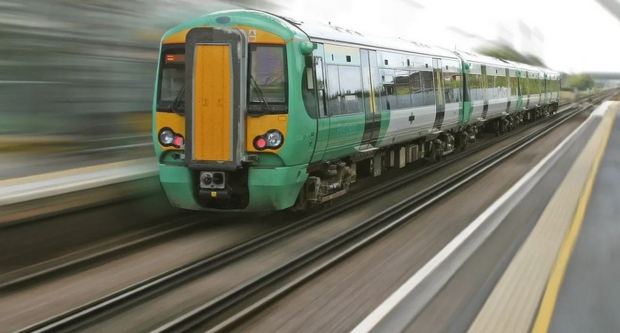TEKO Introduces Small CO2 Refrigeration Unit for Train Kitchens

German OEM TEKO has entered a new market with its CO2 (R744) cooling technology, introducing a unit called ROXSTAtrain for kitchens on trains, and other applications with very limited space.
The ROXSTAtrain was described by Lukas Beier, R&D engineer at TEKO, during the transport and MAC session at the ATMOsphere Europe conference, held online September 28- 29. ATMO Europe was organized by ATMOsphere (formerly shecco), publisher of R744.com.
“It’s nice to see that CO2 is not only for big capacities, and big units, but also for applications that don’t have a big space like a supermarket, so we have a lot of applications where we can use CO2,” Beier said. TEKO offers a wide range of other CO2 rack systems designed for commercial and industrial applications.
The development of the ROXSTAtrain unit was a collaboration between TEKO and Siemens. The goal was to develop a CO2 refrigeration unit fitting train kitchens for both medium-temperature and low-temperature applications, or medium temperature only, and having a capacity up to 1.5kW (0.43TR). Some of the challenges in the design included limited amounts of space and air.
The ROXSTAtrain units are able to serve several types of refrigeration points — including a drink dispenser for beer and soft drinks on tap, fridges and a freezer.
TEKO was required to use stainless steel for the entire unit and comply with fire protection guidelines (EN45545) and vibration test guidelines, as specified in DIN EN 61373. The vibration tests lasted six hours, and were conducted in three axes. The scope of the test was to simulate 25 years of operation.
Two-stage compression
TEKO chose a hermetic CO2 two-stage rotary compressor from Panasonic, with an inverter unit for speed control. This two-stage compressor works by having two suction lines on one side, and two discharge lines on the other.
The first suction line is connected with the various cooling points. “This suction gas is compressed in the first stage, and the discharge gas isn’t expelled directly; it serves the compressor cooling inside the shell,” Beier explained. After this compression, the gas is then discharged outside and led through a desuperheater to cool the gas.
At the outlet of the desuperheater, the system mixes the desuperheated gas with flash gas, and the mixture is then led to the second suction line for the second compression stage, which uses direct compression. The hot gas leaving the second stage is cooled by a gas cooler mounted on top of the unit, next to the desuperheater. The gas cooler has speed-controlled fans, and the desuperheater is equipped with temperature controlled fans.
The units only have high-pressure valves, and a 90bar safety valve; no medium- pressure valve is needed. The receiver contains approximately 2L (0.53gal).
The ROXSTAtrain “has a very compact design, which gives us the advantage of being able to install in very small spaces,” Beier said, adding that the electrical installation is easy, all cables having plugs. Maintenance is also easy, with the front and side panels removable for quick access. These panels are equipped with noise-reducing insulation and “anti-boom” mats, to ensure a comfortable environment for train passengers.
“It’s nice to see that CO2 is not only for big capacities, and big units, but also for applications that don’t have a big space.” Lukas Beier, TEKO
